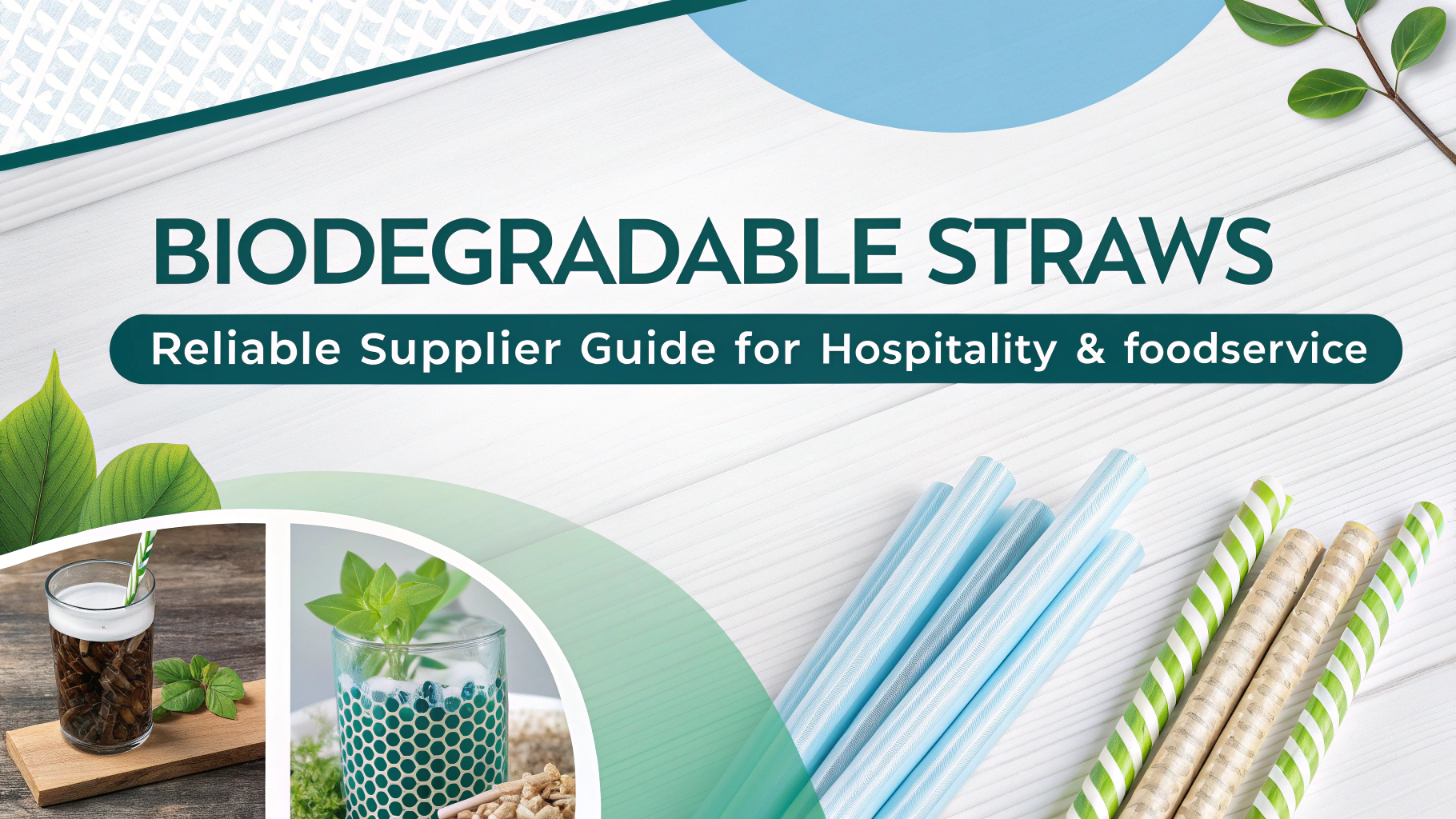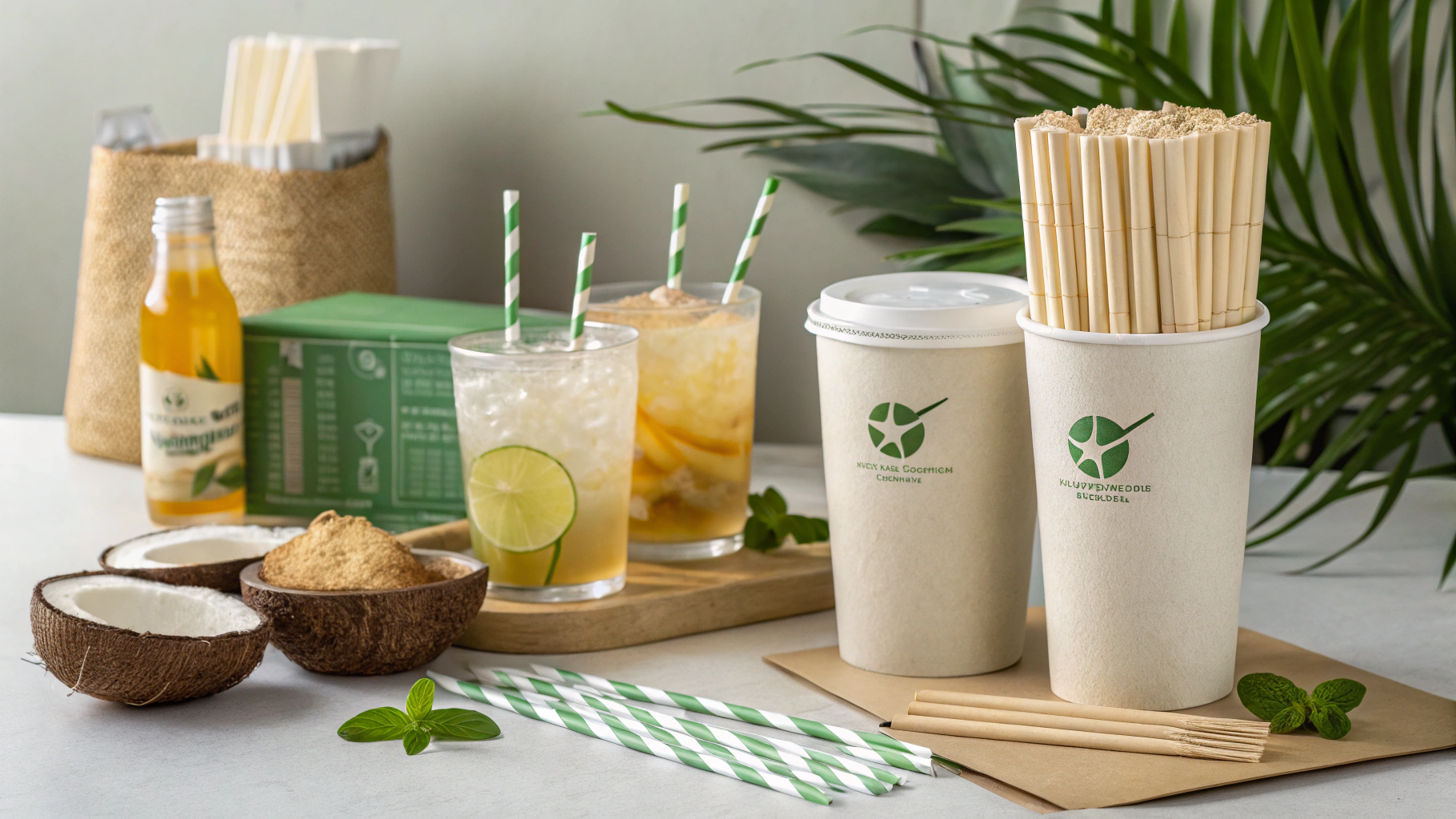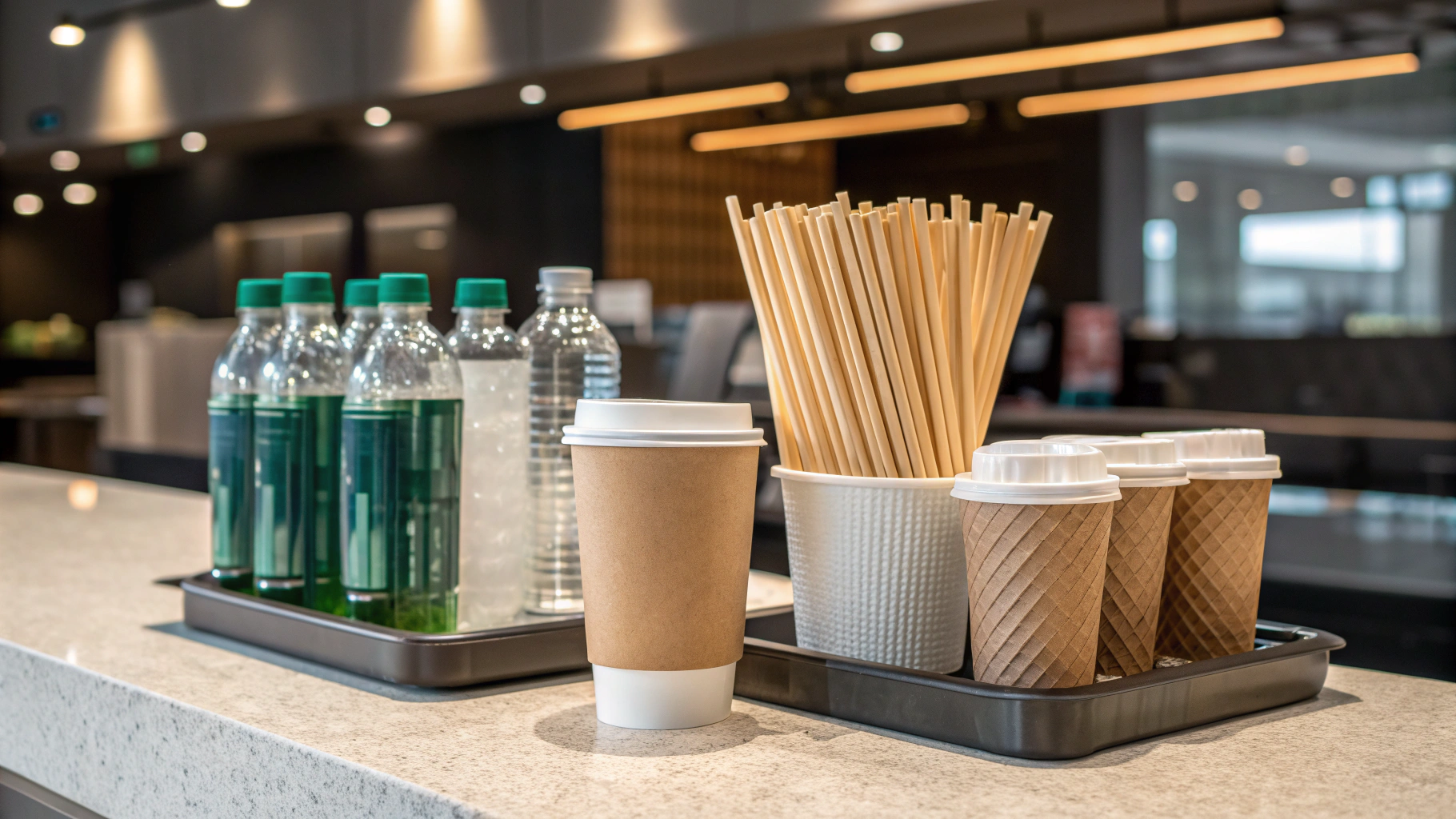
Por Momoio | Publicado: 29 de agosto de 2025
Eventos corporativos não se trata mais de redes ou de celebrar marcos; São declarações poderosas dos valores de uma organização. Em uma época em que a sustentabilidade é fundamental, a escolha de suprimentos de partidos transcende a mera estética, tornando -se um imperativo estratégico para as empresas. Ignorar a pegada ambiental de seus eventos não é mais uma opção, mas um risco operacional e de reputação que pode minar o compromisso da sua marca com um futuro mais verde. O mercado de soluções de eventos sustentáveis não está apenas crescendo; Ele está redefinindo os padrões da indústria, com o mercado global de suprimentos de partidos biodegradáveis projetados apenas para aumentar de US $ 14,3 bilhões em 2024 para impressionantes US $ 38,7 bilhões em 2033, demonstrando um CAGR robusto de 11,7%. Sua organização está realmente refletindo seu compromisso com um futuro mais verde através de suas escolhas de eventos, ou você está inadvertidamente para trás de uma paisagem em rápida evolução?
As implicações de ignorar as compras de eventos sustentáveis são de longo alcance. Além do desperdício visível, há custos invisíveis que afetam diretamente seus resultados e percepção pública. Os plásticos de uso único tradicionais e os materiais não recicláveis continuam a inchar os aterros, contribuindo para uma crise ambiental global. Essa carga crescente de aterros sanitários não é apenas uma questão ecológica; É uma relações públicas. Os consumidores, particularmente na Europa, onde 63% expressam uma preferência por produtos eco-conscientes, estão examinando cada vez mais a responsabilidade ambiental corporativa. Um passo em falso na sustentabilidade de eventos pode rapidamente levar a acusações de "lavagem verde", prejudicar a confiança da marca e corroer a reputação com conquista do conquista, especialmente se as reivindicações de sustentabilidade não forem genuínas ou verificáveis.
O cenário regulatório também está mudando drasticamente, tornando arriscado as práticas de compras tradicionais. Os governos em todo o mundo estão implementando proibições e taxas sobre plásticos de uso único, criando desafios de conformidade e aumentando os custos operacionais para empresas que não se adaptam. Os gerentes de compras enfrentam a complexa tarefa de navegar nesses mandatos em evolução, que variam entre as regiões. Nos EUA, os estados estão cada vez mais promulgando proibições de sacolas plásticas e restrições de contêineres de espuma, enquanto a União Europeia liderou a acusação com as diretrizes direcionadas a vários produtos plásticos de uso único, atraindo empresas a buscar alternativas sustentáveis. Esse impulso legislativo influencia diretamente os critérios de ESG (ambiental, social e governança), que os investidores agora consideram indicadores críticos de saúde corporativa e viabilidade a longo prazo. As organizações que não conseguem atender a esses padrões em evolução correm o risco de alienar investidores, dificultando o acesso ao capital e vendo seus relatórios corporativos refletem mal em seu compromisso com a sustentabilidade. Além disso, a produção intensiva de recursos de certos suprimentos convencionais de partidos, geralmente envolvendo água, energia e uso químico significativo, apresenta um dilema ético e uma tensão logística que os diretores de operações modernas não podem mais ignorar. Os custos de descarte associados a resíduos mistos de eventos tradicionais exacerbam os desafios operacionais, fazendo uma mudança para práticas sustentáveis, não apenas ética, mas economicamente prudente.
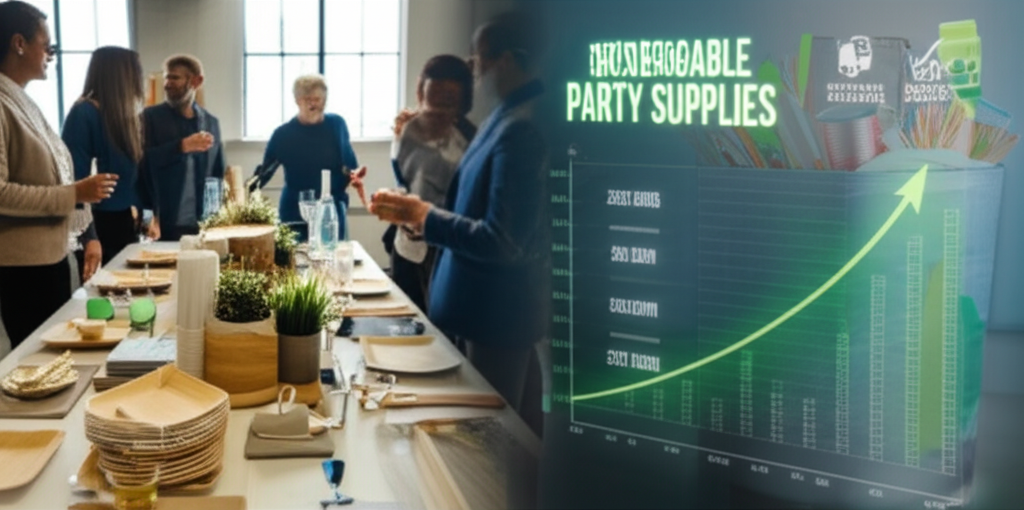
O enfrentamento desses desafios requer um pivô estratégico para materiais e práticas genuinamente ecológicas. Não se trata apenas de encontrar alternativas; Trata -se de melhorar o valor da marca, otimizar as compras e criar resiliência operacional. Compreender o valor comercial tangível dos materiais sustentáveis é o primeiro passo.
Considere uma comparação dos materiais de festa tradicionais versus sustentáveis para compras B2B:
| Recurso | Tradicional (alta pegada ambiental, risco regulatório) | Sustentável (biodegradável, compostável, alinha com políticas verdes) | Impacto B2B | Risco de conformidade (UE/EUA) | ROI potencial |
|---|---|---|---|---|---|
| Plates & Cutlery | Plásticos descartáveis (pp, ps) | Bagasse (cana -de -açúcar), bambu, amido de milho (PLA), papel reciclado, folha de palmeira | Imagem da marca aprimorada, resíduos reduzidos, percepção positiva das partes interessadas | Alto (proibições de plástico) | Custos reduzidos de descarte, relações públicas aprimoradas, diferenciação de mercado |
| Balões | Balões Mylar/Foil (não biodegradáveis, preocupação microplástica) | Balões naturais de látex (com orientação de descarte responsável), lanternas de papel, faixas de tecido, bolhas, cata -vento | Marca ecológica, danos ambientais reduzidos, estética inovadora | Moderado (leis de lixo) | Elevação da reputação da marca, potencial para economia de decoração reutilizável |
| Convites | Virgin Paper Invitations (Intensivo de Recursos) | Papel reciclado/semente, convites digitais (por exemplo, e-vites) | Redução do desperdício de papel, apelo moderno, economia de custos em impressão/postagem | Baixo | Economia significativa de custos, eficiência e percepção moderna da marca |
| Decorações | Flâmulas de plástico descartáveis, confetes convencionais | Bandeirinhas de tecido reutilizáveis, vasos de plantas, flores secas, confetes biodegradáveis | Apoia a economia circular, minimiza o desperdício, estética única do evento | Moderado | Economia de custos a longo prazo através da reutilização e estética única do evento |
As percepções do mercado sublinham esta mudança. O crescimento projetado do mercado global de suprimentos para festas biodegradáveis para US$ 38,7 bilhões até 2033 destaca uma clara oportunidade de investimento para as empresas. Os principais impulsionadores do crescimento incluem a crescente consciência ambiental, regulamentações rigorosas sobre resíduos plásticos e iniciativas de sustentabilidade impulsionadas pelas marcas. Isto reflecte um amplo consenso de que a sustentabilidade já não é um nicho, mas sim uma componente central da estratégia empresarial preparada para o futuro.
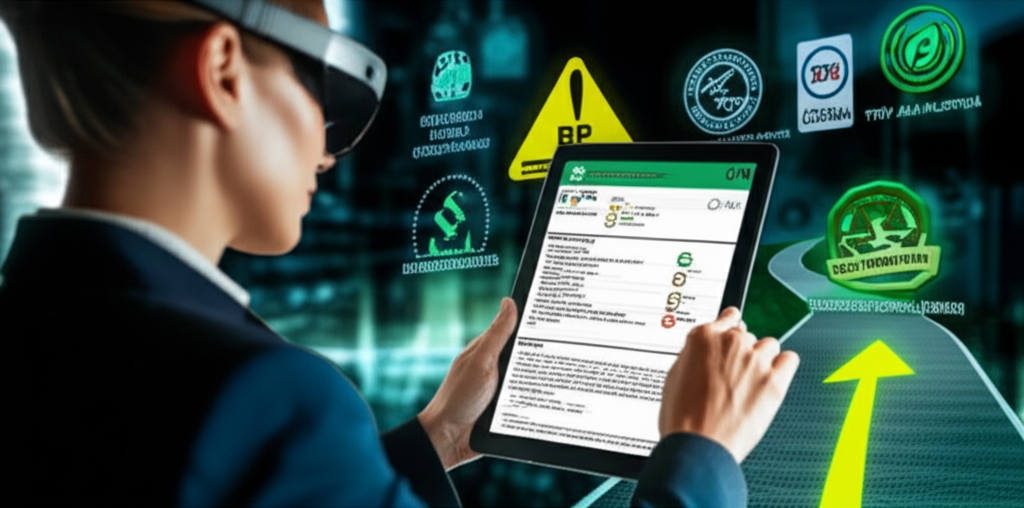
No entanto, navegar nesta onda verde requer vigilância, particularmente no que diz respeito ao “greenwashing”. O termo refere-se ao marketing enganoso que faz com que os produtos pareçam mais ecológicos do que realmente são. Esta prática enganosa representa um risco significativo para as equipas de compras que tentam fazer escolhas verdadeiramente sustentáveis. Muitos produtos rotulados como “biodegradáveis” ou “compostáveis” não se decompõem totalmente em ambientes naturais ou mesmo em sistemas de compostagem doméstica padrão. Por exemplo, alguns copos compostáveis certificados, embora pareçam ecológicos, contêm PFAS (substâncias per- e polifluoroalquílicas) – produtos químicos com conhecidas preocupações ambientais e de saúde – e muitas vezes só se degradam em instalações de compostagem comerciais, que não estão amplamente disponíveis. Além disso, o “plástico biodegradável” pode levar meses ou séculos a decompor-se sem um prazo especificado, muitas vezes ainda contribuindo para a poluição por microplásticos. Esta falta de normas e regulamentos federais claros para produtos bioplásticos, biodegradáveis ou compostáveis em muitas regiões, incluindo partes dos EUA, permite que os fabricantes façam alegações vagas, levando a uma confusão significativa entre consumidores e compradores B2B. Organizações como a Beyond Plastics estão a fazer campanha activa por regulamentações mais claras para combater este problema, destacando a necessidade urgente de maior transparência na cadeia de abastecimento.Saiba mais sobre a poluição plástica e os esforços políticos em Beyond Plastics
Para evitar as armadilhas do greenwashing, é crucial compreender como identificar produtos verdadeiramente sustentáveis:
| Recurso | Vago/Greenwashed (alto risco de desinformação) | Verdadeiramente Sustentável (Verificável, Baixo Impacto Ambiental) |
|---|---|---|
| Reivindicação do produto | “Plástico Biodegradável” (sem condições ou prazos especificados) | Compostável Industrial Certificado (por exemplo, certificado BPI, EN 13432 para UE) |
| Decomposição | Pode exigir condições industriais específicas, muitas vezes indisponíveis; pode levar séculos para quebrar; contribui para microplásticos. | Diretrizes claras para decomposição em instalações comerciais; se decompõe em elementos naturais. |
| Balões | Balões de látex “biodegradáveis” (ainda podem levar anos para se decompor, ameaças à vida selvagem) | Decorações reutilizáveis (banners de tecido, vasos de plantas), bolhas, cata-ventos, flores secas |
| Certificações | Nenhuma ou reivindicações internas vagas | Certificações de terceiros reconhecidas (por exemplo, BPI, TÜV AUSTRIA, Cradle to Cradle) |
| Transparência | Informações limitadas sobre fornecimento de materiais ou processos de fim de vida | Transparência total sobre as origens dos materiais, fabricação e opções de descarte verificadas |
A busca pela transparência e certificação está se intensificando. As marcas líderes estão priorizando a inovação ecologicamente correta e afirmações claras e verificáveis para superar os concorrentes. Isto não só constrói a confiança do consumidor, mas também fortalece as relações B2B, demonstrando um compromisso genuíno com objectivos de sustentabilidade partilhados. As empresas que investem em produtos sustentáveis autênticos e certificados estão a posicionar-se como líderes responsáveis na sua indústria.
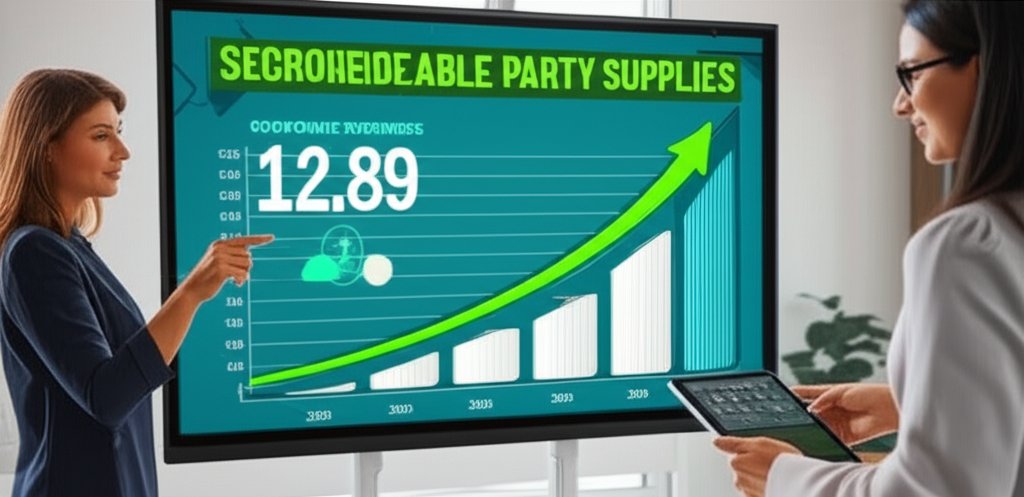
Para além dos artigos biodegradáveis de utilização única, a adoção dos princípios da reutilização e da economia circular oferece benefícios ainda maiores a longo prazo. A implementação estratégica de opções reutilizáveis, como lençóis de pano, louça durável e decoração permanente, traduz-se em poupanças de custos significativas ao longo do tempo e numa redução drástica de desperdícios. Por exemplo, empresas como a Brambles, que operam através da marca CHEP, exemplificam um modelo de economia circular ao promover a “partilha e reutilização” de ativos como paletes e contentores. Esta abordagem minimiza a procura de recursos naturais virgens, reduz o desperdício e optimiza a logística, fornecendo um modelo poderoso de como os fornecimentos de eventos podem evoluir para um sistema de circuito fechado mais sustentável. Esta mudança de mentalidade – do descarte para o uso contínuo – é uma pedra angular das compras sustentáveis modernas.Saiba mais sobre como adotar os princípios da Economia Circular em suas operações.

Preparar seus eventos para o futuro significa mais do que apenas conformidade; significa alavancar a inovação para diferenciação e vantagem competitiva. O futuro dos materiais para festas ecológicos é dinâmico, marcado por avanços contínuos na ciência dos materiais. Podemos esperar ver plásticos vegetais e fibras naturais rapidamente decomponíveis, que não só se decompõem rapidamente, mas também mantêm a resistência, a durabilidade e o apelo estético dos produtos convencionais. A integração tecnológica desempenhará um papel crucial, com o surgimento de ferramentas baseadas em IA para ajudar no planeamento sustentável de eventos, oferecendo alternativas ecológicas e geração de temas com uma eficiência sem precedentes. A Realidade Aumentada (AR) e a Realidade Virtual (VR) também foram definidas para transformar a forma como as organizações visualizam as configurações dos eventos, reduzindo potencialmente a necessidade de amostras físicas e minimizando o desperdício na fase de planejamento. Imagine visualizar toda a decoração do seu evento em um espaço virtual, garantindo que cada elemento atenda aos seus critérios estéticos e de sustentabilidade antes que um único item físico seja produzido.
Além disso, a personalização e a customização, aprimoradas por IA e software de design, permitirão a criação mais fácil de decorações exclusivas e ecológicas. Tecnologias como a impressão 3D, que utilizam materiais sustentáveis, poderiam permitir itens sob demanda altamente personalizados que se alinham perfeitamente com a identidade da marca, ao mesmo tempo que minimizam a superprodução e o desperdício. Este foco em experiências personalizadas e sustentáveis fortalece a narrativa da marca e ressoa profundamente com clientes, parceiros e funcionários ambientalmente conscientes. Ao alinharem-se visivelmente com valores sustentáveis, as organizações não só melhoram a sua imagem, mas também alcançam os Objectivos de Desenvolvimento Sustentável da ONU e reforçam o seu desempenho ESG, atraindo os melhores talentos e novas oportunidades de negócio. Estas estratégias inovadoras prometem não só uma pegada ambiental reduzida, mas também eficiências de custos significativas através de aquisições optimizadas, despesas reduzidas de gestão de resíduos e acesso potencial a financiamento verde ou incentivos fiscais. A trajetória de crescimento dos produtos ecologicamente conscientes é clara, posicionando os primeiros adotantes para uma vantagem competitiva.Explore as preferências atuais do consumidor e as tendências de consumo ético em Consumidor Ético.
A hora de agir é agora. Para implementar uma estratégia robusta de eventos sustentáveis, comece com uma auditoria completa de seus processos atuais de aquisição de suprimentos para eventos. Identifique áreas onde prevalecem plásticos descartáveis e materiais não recicláveis. Priorize a aquisição de fornecedores que ofereçam produtos certificados compostáveis, reciclados ou reutilizáveis, sempre verificando as declarações com certificações de terceiros. Invista na educação de suas equipes de planejamento de eventos e partes interessadas sobre escolhas sustentáveis e gerenciamento adequado de resíduos, estabelecendo diretrizes claras para descarte, como caixas de compostagem dedicadas para itens certificados. Explore alternativas digitais para convites, confirmações de presença e materiais de marketing de eventos para reduzir drasticamente o consumo de papel. Mais importante ainda, procure fornecedores com credenciais de sustentabilidade verificáveis e processos de produção transparentes para garantir a autenticidade.
Dê o passo definitivo em direção a um futuro mais verde e responsável para seus eventos corporativos. Ao quantificar a poupança de custos através da redução de desperdícios, mitigando os riscos regulamentares e elevando o valor da sua marca através da sustentabilidade visível, pode capturar oportunidades significativas de quota de mercado.Consulte nosso guia para verificação sustentável de fornecedores para estratégias robustas de aquisição.Envolva-se com consultores de sustentabilidade para adaptar uma estratégia de evento ecológico sob medida que se alinhe com seus objetivos de negócios específicos. Acesse nosso guia completo sobre verificação de fornecedores de eventos sustentáveis para capacitar suas equipes de compras. Inicie um programa piloto para o seu próximo evento interno ou voltado para o cliente, meça o impacto e demonstre liderança em sustentabilidade corporativa. A jornada para eventos verdadeiramente sustentáveis é um investimento estratégico que rende dividendos em reputação, eficiência e diferenciação de mercado.
Perguntas frequentes
Por que os suprimentos para festas ecológicos são um imperativo B2B para eventos corporativos?
Os suprimentos para festas ecológicos são cruciais para o B2B devido à crescente demanda de clientes, funcionários e regulatórios por práticas mais ecológicas. Ajudam a evitar acusações de “lavagem verde”, reduzem os custos operacionais associados ao desperdício e melhoram a reputação da marca, alinhando-se com os valores de sustentabilidade e os critérios ESG. A projeção é que o mercado cresça significativamente, tornando-se uma vantagem estratégica.
Como podem as empresas identificar fornecimentos de festas genuinamente sustentáveis e evitar o greenwashing?
As empresas devem estar vigilantes contra o “greenwashing”, que envolve marketing enganoso. Procure produtos com certificações de terceiros claras e verificáveis (por exemplo, BPI, EN 13432 para compostabilidade industrial), cadeias de abastecimento transparentes e prazos de decomposição especificados em condições realistas. Tenha cuidado com termos vagos como “plástico biodegradável” sem contexto adicional, pois podem não se decompor de forma eficaz ou contribuir para a poluição por microplásticos.
Quais são os principais tipos de materiais e produtos ecológicos para eventos corporativos?
Os principais materiais ecológicos incluem bagaço (subproduto da cana-de-açúcar), bambu, amido de milho (PLA), folhas de palmeira e papel reciclado para talheres. As alternativas aos balões incluem látex natural (com descarte responsável), lanternas de papel, faixas de tecido, bolhas e cata-ventos. Convites digitais ou em papel reciclado/semente também são escolhas sustentáveis. Opções reutilizáveis, como lençóis de pano e louças duráveis, reduzem ainda mais o desperdício.
Como os suprimentos sustentáveis para festas impactam o desempenho ESG e o valor da marca de uma empresa?
A adoção de suprimentos sustentáveis reforça significativamente o desempenho ESG de uma empresa, demonstrando responsabilidade ambiental (E). Aumenta o valor da marca ao atrair clientes e talentos ambientalmente conscientes, sinalizando um compromisso com práticas éticas. Esta abordagem proativa mitiga riscos de reputação, alinha-se com os Objetivos de Desenvolvimento Sustentável da ONU e posiciona a marca como líder responsável do setor.
Que tendências futuras os gestores de compras devem prever em termos de fornecimentos ecológicos para eventos?
Os gestores de compras devem antecipar os avanços nos plásticos vegetais e nas fibras naturais de rápida decomposição. As ferramentas baseadas em IA ajudarão no planejamento sustentável de eventos e na geração de temas, enquanto as tecnologias AR/VR permitirão a visualização virtual da decoração, reduzindo o desperdício físico no planejamento. O aumento da personalização através de IA e impressão 3D com materiais sustentáveis também será proeminente.


